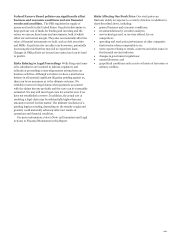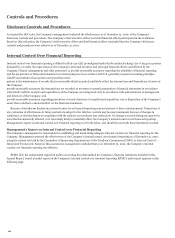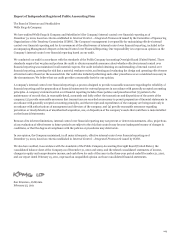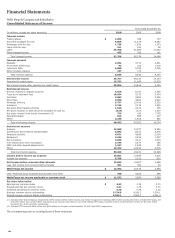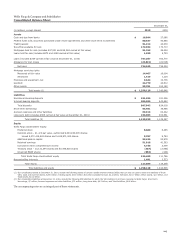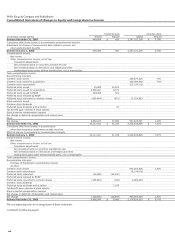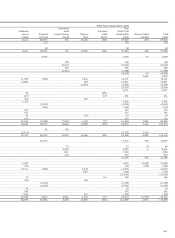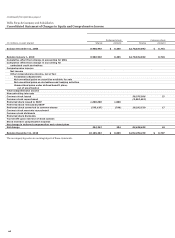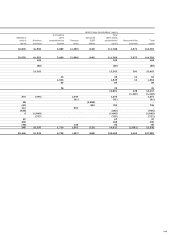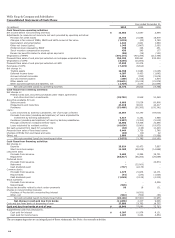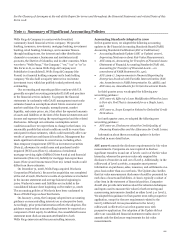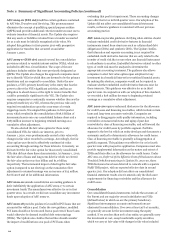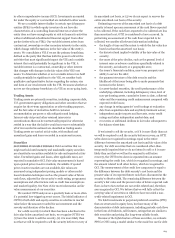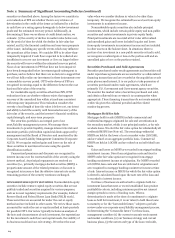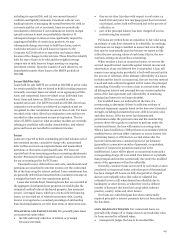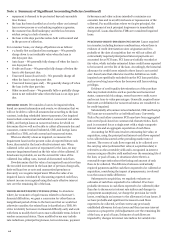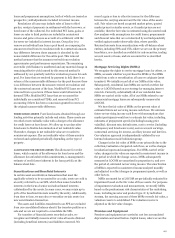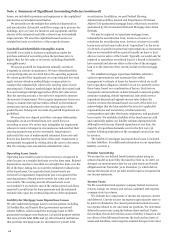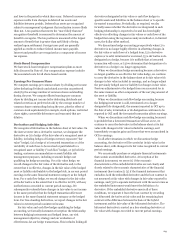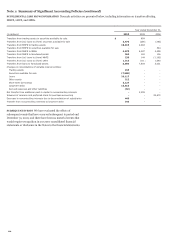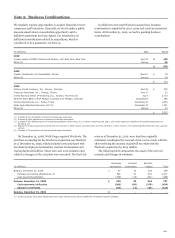Wells Fargo 2010 Annual Report Download - page 113
Download and view the complete annual report
Please find page 113 of the 2010 Wells Fargo annual report below. You can navigate through the pages in the report by either clicking on the pages listed below, or by using the keyword search tool below to find specific information within the annual report.
See the Glossary of Acronyms at the end of this Report for terms used throughout the Financial Statements and related Notes of this
Form 10-K.
Wells Fargo & Company is a nation-wide diversified,
community-based financial services company. We provide
banking, insurance, investments, mortgage banking, investment
banking, retail banking, brokerage, and consumer finance
through banking stores, the internet and other distribution
channels to consumers, businesses and institutions in all
50 states, the District of Columbia, and in other countries. When
we refer to “Wells Fargo,” “the Company,” “we,” “our” or “us” in
this Form 10-K, we mean Wells Fargo & Company and
Subsidiaries (consolidated). Wells Fargo & Company (the
Parent) is a financial holding company and a bank holding
company. We also hold a majority interest in a real estate
investment trust, which has publicly traded preferred stock
outstanding.
Note 1: Summary of Significant Accounting Policies
Our accounting and reporting policies conform with U.S.
generally accepted accounting principles (GAAP) and practices
in the financial services industry. To prepare the financial
statements in conformity with GAAP, management must make
estimates based on assumptions about future economic and
market conditions (for example, unemployment, market
liquidity, real estate prices, etc.) that affect the reported amounts
of assets and liabilities at the date of the financial statements and
income and expenses during the reporting period and the related
disclosures. Although our estimates contemplate current
conditions and how we expect them to change in the future, it is
reasonably possible that actual conditions could be worse than
anticipated in those estimates, which could materially affect our
results of operations and financial condition. Management has
made significant estimates in several areas, including other-
than-temporary impairment (OTTI) on investment securities
(Note 5), allowance for credit losses and purchased credit-
impaired (PCI) loans (Note 6), valuations of residential
mortgage servicing rights (MSRs) (Notes 8 and 9) and financial
instruments (Note 16), liability for mortgage loan repurchase
losses (Note 9) and income taxes (Note 20). Actual results could
differ from those estimates.
On December 31, 2008, Wells Fargo acquired Wachovia
Corporation (Wachovia). Because the acquisition was completed
at the end of 2008, Wachovia's results of operations are included
in the income statement and average balances beginning in
2009. Wachovia's assets and liabilities are included in the
consolidated balance sheet beginning on December 31, 2008.
The accounting policies of Wachovia have been conformed to
those of Wells Fargo as described herein.
On January 1, 2009, the Company adopted new accounting
guidance on noncontrolling interests on a retrospective basis.
Accordingly, prior period information reflects the adoption. The
guidance requires that noncontrolling interests be reported as a
component of total equity. In addition, the consolidated income
statement must disclose amounts attributable to both
Wells Fargo interests and the noncontrolling interests.
Accounting Standards Adopted in 2010
In first quarter 2010, we adopted the following accounting
updates to the Financial Accounting Standards Board (FASB)
Accounting Standards Codification (ASC or Codification):
• Accounting Standards Update (ASU or Update) 2010-6,
Improving Disclosures about Fair Value Measurements;
• ASU 2009-16, Accounting for Transfers of Financial Assets
(Statement of Financial Accounting Standards (FAS) 166,
Accounting for Transfers of Financial Assets – an
amendment of FASB Statement No. 140);
• ASU 2009-17, Improvements to Financial Reporting by
Enterprises Involved with Variable Interest Entities (FAS
167, Amendments to FASB Interpretation No. 46(R)); and
• ASU 2010-10, Amendments for Certain Investment Funds.
In third quarter 2010, we adopted the following new
accounting guidance:
• ASU 2010-18, Effect of a Loan Modification When the Loan
is Part of a Pool That is Accounted for as a Single Asset;
and
• ASU 2010-11, Scope Exception Related to Embedded Credit
Derivatives.
In fourth quarter 2010, we adopted the following new
accounting guidance:
• ASU 2010-20, Disclosures about the Credit Quality of
Financing Receivables and the Allowance for Credit Losses.
Information about these accounting updates is further
described in more detail below.
ASU 2010-6 amends the disclosure requirements for fair value
measurements. Companies are now required to disclose
significant transfers in and out of Levels 1 and 2 of the fair value
hierarchy, whereas the previous rules only required the
disclosure of transfers in and out of Level 3. Additionally, in the
rollforward of Level 3 activity, companies must present
information on purchases, sales, issuances, and settlements on a
gross basis rather than on a net basis. The Update also clarifies
that fair value measurement disclosures should be presented for
each class of assets and liabilities. A class is typically a subset of
a line item in the statement of financial position. Companies
should also provide information about the valuation techniques
and inputs used to measure fair value for both recurring and
nonrecurring instruments classified as either Level 2 or Level 3.
We adopted this guidance in first quarter 2010 with prospective
application, except for the new requirement related to the
Level 3 rollforward. Gross presentation in the Level 3
rollforward is effective for us in first quarter 2011 with
prospective application. Our adoption of the Update did not
affect our consolidated financial statement results since it
amends only the disclosure requirements for fair value
measurements.
111


